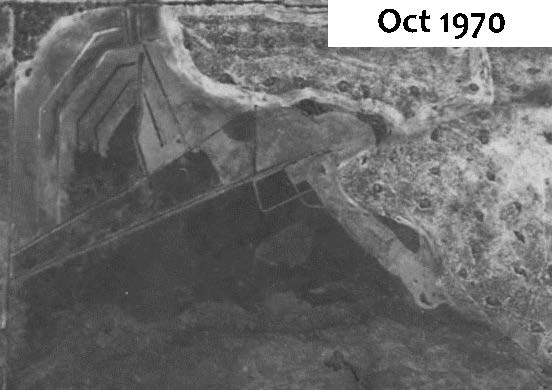More wetland restoration works at Glenshera Swamp complete, ahead of Swamp Fest 2022!
In what has been a huge few months of on-ground hydrological restoration works for NGT, after March works in Tassie and April works at Hutt Bay, our final autumn works update is for the part of Glenshera Swamp that is situated within Stipiturus Conservation Park.
It is hard to believe, but it has now been seven years since we first started the process of planning for the hydrological restoration of this important wetland: the largest remaining example of the Swamps of the Fleurieu Peninsula, a critically endangered ecological community under the EPBC Act 1999. To learn about the earlier phases of restoration work at Glenshera swamp in 2017 and 2020, as well as other NGT news over the years about the site, please click this link.
Despite the great progress we’ve made so far alongside our range of partners (the Friends of Stipiturus and Hesperilla Conservation Parks, Hills and Fleurieu Landscape Board and National Parks and Wildlife SA), there are still a few tasks that need addressing in the portion of the wetland situated within Stipiturus Conservation Park, to get this wetland functioning as well as it possibly can from a hydrological perspective. The good news is that by doing so, we’ll give this groundwater-fed peatland extra resilience by better buffering and protecting the water resource that underpins it. As well addressing short-terms risks to wetland ecology, increasing ecosystem resilience in the face of projected climate change through hydrological restoration is a really smart long-term move.
The task this year was relatively straightforward, as the next phase of works took us around to the northern slopes of Glenshera Swamp. This is a zone where a series of parallel drains were dug through the peatland and up the saturated bank in the 1960s, in an attempt to dewater the peat and make it possible to establish pasture grasses. The development of this part of the wetland is shown below.

Glenshera Swamp 1899 
Glenshera Swamp 1949

Glenshera Swamp 1956 
Glenshera Swamp 1970
The view that we encountered before commencing work, noting that National Parks had recently completed a prescribed burn in the general vicinity where we were working, is shown below. The drains that start in the bed of the peatland and run up the slope can be seen in the top left part of the image.

Our objective for the works was simply to attempt to knit the surface of the peat back together, by obtaining previously excavated material from the spoil banks adjacent to the drains. The cross-section below explains the remediation process at this site.

Over a series of days in mid-May, thanks to the assistance of excavator operator Chris, we managed to beat the rains and successfully complete the process in all those areas where site conditions enabled access. The before and after image below on the second main drain up the slope, shows the process up close – in this case, removing the spoil back to the right of the drain and backfilling it to natural surface.

Before remediation 
After remediation
In terms of the impact of the works, the outcomes on groundwater and peat saturation levels were immediate and clearly apparent. One of the big benefits of working in an environment that has a constant supply of groundwater is that you don’t have to wait long to see results!
The image below shows how only a day after backfilling the drain to the right of this image, groundwater is already seeping out at natural surface, ready to trigger the process of recovery of native vegetation in this peatland. It is deceptive from this angle, but it is worth remembering that there is quite a lot of fall up this slope, so the water visible in this image is not all sitting at the same level. To see this ground re-saturate so quickly certainly makes clear both (a) the original purpose of the drains and (b) their ongoing impact.

Finally, the pdf below, which you can click through, shows a before and after aerial image of the site in in May 2022, with the final image highlighting the drains that were backfilled around the northern margin. A further short section of drain on eastern margin of the swamp was also backfilled which is off this image, but was the final part of the job we completed this year.
Aerial-showing-remediated-drainsAs you’ll see on the final image above, there was one section of drain we had to skip around, as the ground was too soft for the excavator to travel over due to the presence of a spring. Thankfully skipping this flatter section of drain did not impact on the overall efficacy of the works.
Finally, in some great news, the process of habitat recovery in this part of the Park will be given an immediate boost thanks to an upcoming Swamp Fest Community Planting Day coming up on Saturday 25th June 2022, organised by the Friends of Stipiturus and Hesperilla Conservation Parks.
To register your interest in attending, please click below.
This work is being delivered by NGT in partnership with Friends of Stipiturus and Hesperilla Conservation Parks,
funded by the National Parks and Wildlife Service, Friends of Parks Partnership Grants Program.


